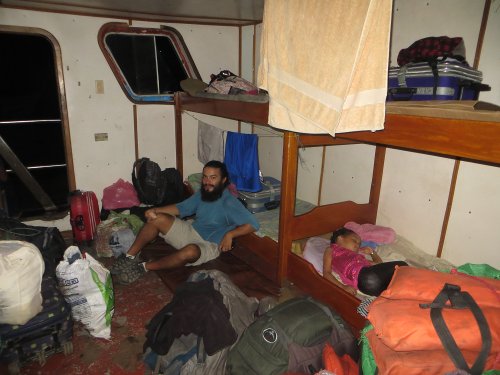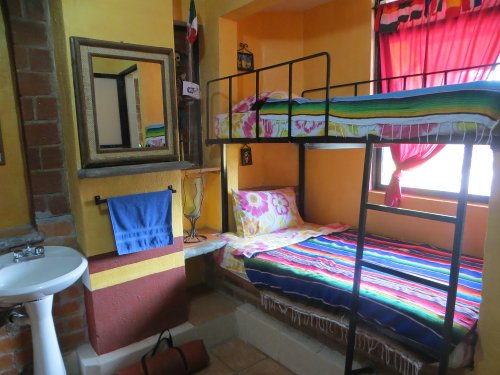Where Are We Sleeping Tonight? – Year 4
A daily question throughout our travels even until the last days, “Where are we sleeping tonight?” Year four, an extended year with a few more days, could not be the exception from previous years and it was full of amazing experiences and surprises. We completed 1500 days of travels and concluded Our First World Trip on November 15, 2016, we never thought we would travel for this long and it has been possible all thanks to the support, kindness, and hospitality of people from all over the world. To all those perfect strangers that became friends of a lifetime, the loving families that adopted us, the old friends, the friends of friends, and our family members who hosted us, our deepest gratitude and love to them. Each and every one of you helped us keep this dream alive and kept us going, this journey is also yours!
Throughout our last year, the last 405 days, on the road, picking where we slept and using great networks like Couchsurfing and WWOOFing continued to make a difference in our journey. The sense of adventure and commitment to travel motivated us to keep camping, sleeping in overnight buses, trains, and ferries as much as possible to save on accommodation. We welcomed year four in Paraguay and since then we visited Brazil, Colombia, Panama, Costa Rica, Cuba, Nicaragua, Honduras, El Salvador, Guatemala, and Mexico. In these countries, we have used different sleeping arrangements. In this article, we share with you general facts and specific stories regarding our sleeping experiences in those destinations so you could have a better picture of our last bit of the trip. We WWOOFed and volunteered at organic farms in Panama and Honduras. We used Airbnb, an online network to reserve affordable private accommodation, only one time in Manaus, Brazil. We were fortunate to be hosted by amazing people through Couchsurfing in the countries of Brazil, Colombia, Panama, Costa Rica, Nicaragua, El Salvador, Guatemala, and Mexico. We stayed with friends and family in Paraguay, Colombia, Costa Rica, Nicaragua, Honduras, El Salvador, and Guatemala. We also slept at hostels in Paraguay, Brazil, Colombia, Costa Rica, Honduras, El Salvador, Guatemala, and Mexico. We camped in Brazil, Colombia, Panama, Nicaragua, and Guatemala. And we loved sleeping in hammocks in a few occasions in Brazil, as well as doing staying in homestays throughout Cuba. While traveling through Brazil, Colombia, Cuba, Nicaragua, and Mexico we slept in overnight buses and ferries several times.
During year four, we did a total of 36 days of volunteer work through WWOOF at two organic farms in Panama and Honduras. We WWOOFed 18 days in Lago Bay in Panama, a community near the town of Santa Catalina in the pacific coast of the country. During our days there, we lived in a very comfortable two-story duplex with our own kitchen all to ourselves. The duplex also had a rooftop area with a bar to enjoy the view during the evenings. We really loved being there because the place allowed us to have a sense of home, prepare our own meals, and being at the same place for several days to build a routine.

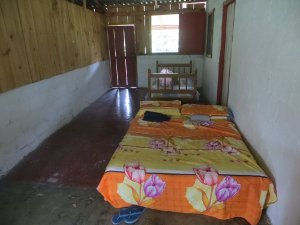
For eight days, we lived at Ecofinca Luna del Puente in Honduras, a family farm and declared natural reserve located in the mountains east of Yojoa Lake. At Luna del Puente, we had a private room and restroom, and during our days there, we learned how to harvest cocoa and the crafty way to make chocolate for consumption.
The following are just some more of our most memorable, funny, and unforgettable sleeping experiences of these last 405 days around the world:
In Paraty, Brazil, we slept in a dormitory for 9 people with bathroom and triple bunk beds. It was the least expensive option we found, 34 reales per person (about $8 USD). We got lucky that nobody else checked into dormitory while we were there, so we had a private room all to ourselves. We have never slept in bunk beds of three levels, look at the picture!
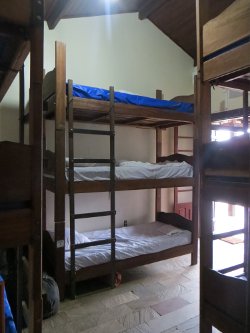
For many reasons, our time in Brazil was unforgettable. In terms of our sleeping arrangements, Brazil gave us the unique and pleasant opportunity of sleeping in hammocks for the first time in our lives. In Atin, next to Lençois Marahanes National Park, we found a very basic campsite all to ourselves. We set our tent under a roof trying to escape the sun and got offered some hammocks as well. At the end, we decided to sleep in the hammocks during the three nights we were there. The hammocks were so much more comfortable and fresher than our tent and we used our sleeping bags as blankets every night. We also slept in hammocks three other nights while traveling from Belem to Santarem along the Amazon River. Lastly, we also slept three nights in a hammock during an Amazon jungle tour by the Urubu River.
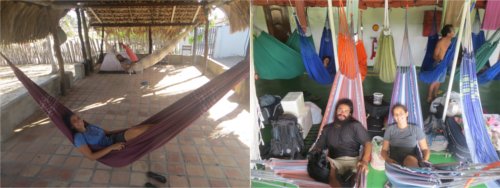
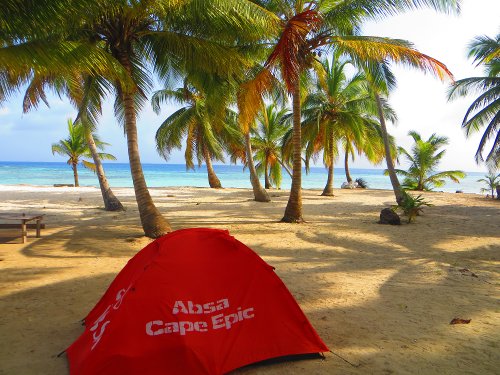
In Panama, we had one of the little and gorgeous island of the San Blas Archipelago all to ourselves. We camped for three nights at the Perro Grande Island. The first two nights we were the only tourist there. It was an amazing experience, the feeling of solitude and calmness, right in the Caribbean Ocean and surrounded by other islands. We had never been on an island this small and staying there a few days was, without a doubt, the honey within our extended moon around the world. 🙂
Another unique camping experience took place at the summit of Volcano Baru in Panama. The designated camping area was dirty and the grass was very high, making it inaccessible. Luckily, we were helped by a local driver and employees that authorized us to set our tent inside the facilities where the antennas are located. It was not a beautiful or quiet place to camp for the night, but it was safe and for sure the best location to wake up early to see the sunrise and have a view of both oceans, Pacific and Caribbean.

In Cuba, we slept in a total of 11 different homestays, paying an average of $15 USD per room a night with private bathroom and A/C. Normally Cubans charge $25 USD per room per night, and many times if another home stay refers you, they also get a commission. The best way to get lower rates in Cuban homestays is just walk in without reservation, so you get a chance to bargain the price. Even if money is not an issue for you, staying at homestays in Cuba is truly a priceless experience. You get to live with Cuban families, contributing directly to them, and learn about their country from the inside.
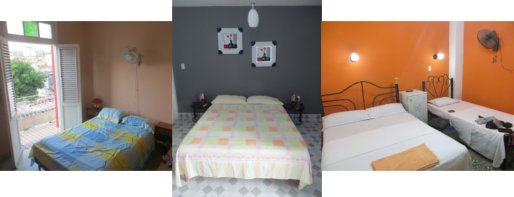
Sleeping in buses and ferries has been an ongoing strategy to save money during our trip. Visiting the Corn Islands in the Caribbean Ocean of Nicaragua was a dream, most tourist take a direct flight from Managua, but not us of course. Instead, we figured out and followed the cheapest transportation alternatives available. In order to reach Big Corn island, we took the Island Express, an overnight boat departing from El Rama. This cargo boat has a very small room with four bunk beds for passengers, but there were not enough beds for everyone on board. We ended up sleeping on a mat on the floor surrounded by other passengers and bags in a crowded tiny room. It was uncomfortable but fresh enough because of a breeze coming in all night. Definitely not a romantic honeymoon sleeping arrangement but stories like this made our journey unforgettable. 😉
The best hostel experience took place at one of the most beautiful cities we visited in our entire world trip, La Casa de Dante in Guanajuato, Mexico. A homey, colorful, and welcoming place with the most delicious and well served breakfasts. We are dying to return to Guanajuato and this family-owned hostel one day!
